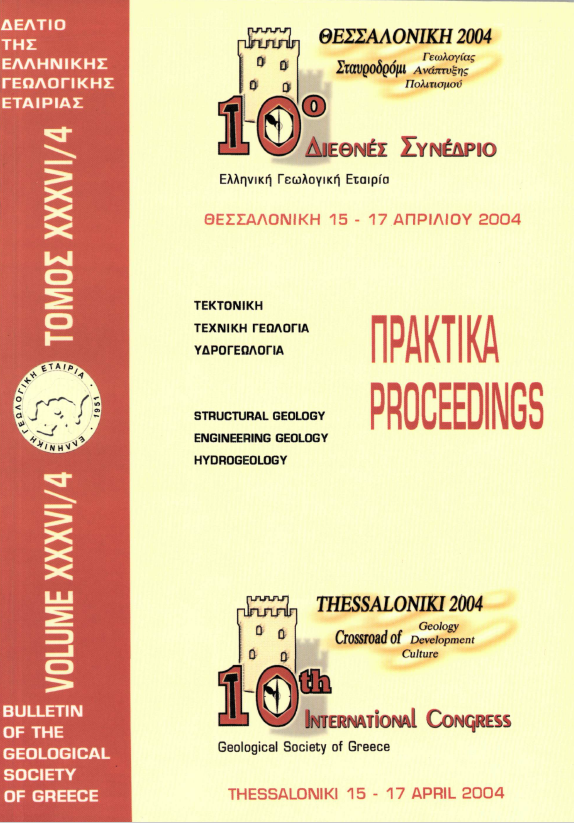CONTRIBUTION OF SEASONAL STOCHASTIC MODELS SARIMA TO THE RATIONAL WATER RESOURCES MANAGEMENT. THE CASE OF THE KRANIA ELASSONA KARST SYSTEM, THESSALY, GREECE
Abstract
Several stochastic models, known as Box and Jenkins or SARIMA (Seasonal Autoregressive Integrated Moving Average) have been used in the past for forecasting hydrological time series in general and stream flow or spring discharge time series in particular. SARIMA models became very popular because of their simple mathematical structure, convenient representation of data in terms of a relatively small number of parameters and their applicability to stationary as well as nonstationary process.
Application of the seasonal stochastic model SARIMA to the spring's monthly discharge time series for the period 1974-1993 in Krania Elassona karst system yielded the following results. Logarithms of the monthly spring discharge time series can be simulated on a SARIMA (4,1,1)(1,1,1)12 type model. This type of model is suitable for the Krania Elassona karst system simulation and can be utilised as a tool to predict monthly discharge values at Kafalovriso spring for at least a 2 year period. Seasonal stochastic models SARIMA seem to be capable of simulating both runoff and groundwater flow conditions on a karst system and also easily adapt to their natural conditions.
Adapting the proper stochastic model to the karst groundwater flow conditions offers the possibility to obtain accurate short term predictions, thus contributing to rational groundwater resources exploitation and management planning
Article Details
- How to Cite
-
Μανάκος A., & Δημόπουλος Γ. (2004). CONTRIBUTION OF SEASONAL STOCHASTIC MODELS SARIMA TO THE RATIONAL WATER RESOURCES MANAGEMENT. THE CASE OF THE KRANIA ELASSONA KARST SYSTEM, THESSALY, GREECE. Bulletin of the Geological Society of Greece, 36(4), 2012–2020. https://doi.org/10.12681/bgsg.16700
- Section
- Hydrology and Hydrogeology

This work is licensed under a Creative Commons Attribution-NonCommercial 4.0 International License.
Authors who publish with this journal agree to the following terms:
Authors retain copyright and grant the journal right of first publication with the work simultaneously licensed under a Creative Commons Attribution Non-Commercial License that allows others to share the work with an acknowledgement of the work's authorship and initial publication in this journal.
Authors are able to enter into separate, additional contractual arrangements for the non-exclusive distribution of the journal's published version of the work (e.g. post it to an institutional repository or publish it in a book), with an acknowledgement of its initial publication in this journal. Authors are permitted and encouraged to post their work online (preferably in institutional repositories or on their website) prior to and during the submission process, as it can lead to productive exchanges, as well as earlier and greater citation of published work.



